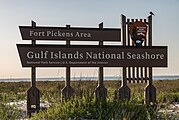Wikipedia:Main Page history/2019 June 7
From today's featured articleThe history of aluminium in human usage goes back at least 2,500 years, when its compound alum was used for dyeing and city defense. During the Middle Ages, alum was traded in international commerce. In the Age of Enlightenment, the earth of alum, alumina, was shown to be an oxide of a new metal which was then discovered in the 1820s. Pure aluminium remained scarce until industrial production began in 1856; since the 1886 discovery of the Hall–Héroult process, production has grown exponentially. Engineering and construction applications began in the first half of the 20th century; aluminium was a vital strategic resource for aviation during both world wars. In 1954, it surpassed copper as the most produced non-ferrous metal. In the following decades, aluminium production spread throughout the world, and the metal became an exchange commodity and gained usage in transportation and packaging. Aluminium production in the 21st century exceeds that of all other non-ferrous metals combined. (Full article...)
Recently featured: Did you know...
|
In the news
On this dayJune 7: Journalist's Day in Argentina
Thomas West, 3rd Baron De La Warr (d. 1618) · James Young Simpson (b. 1811) · Louise Erdrich (b. 1954) |
From today's featured list
The United States has ten protected areas known as national seashores and three known as national lakeshores, which are public lands operated by the National Park Service, an agency of the Department of the Interior. National seashores and lakeshores are coastal areas federally designated by Congress as being of natural and recreational significance as a preserved area. All of the national lakeshores are on Lakes Michigan and Superior, whereas nine of the ten national seashores are on the Atlantic Ocean, including two on the Gulf of Mexico. National seashores are located in ten states and national lakeshores are in two other states. Florida, North Carolina and Michigan each have two. The largest national seashore or lakeshore is Gulf Islands (sign pictured), at over 137,000 acres (550 km2); the smallest is Fire Island, at 19,579 acres (79.23 km2). (Full list...)
Today's featured picture

|
The European paper wasp (Polistes dominula or Polistes dominulus) is one of the most common species of wasps in the genus Polistes. Originally described in 1791 by German naturalist Johann Ludwig Christ as Vespa dominula, it is native to southern Europe and North Africa, as well as temperate parts of Asia as far east as China. It has also been introduced to Australia, New Zealand, South Africa and the Americas. The species is common and cosmopolitan due to its exceptional survival features, such as a productive colony cycle, a short development time and a higher ability to endure predator attacks. It generally lives in temperate, terrestrial habitats, such as chaparral, forest and grassland biomes. This picture shows a young European paper wasp queen guarding her nest and eggs. Photograph credit: Joaquim Alves Gaspar
Recently featured: |
Other areas of Wikipedia
- Community portal – Bulletin board, projects, resources and activities covering a wide range of Wikipedia areas.
- Help desk – Ask questions about using Wikipedia.
- Local embassy – For Wikipedia-related communication in languages other than English.
- Reference desk – Serving as virtual librarians, Wikipedia volunteers tackle your questions on a wide range of subjects.
- Site news – Announcements, updates, articles and press releases on Wikipedia and the Wikimedia Foundation.
- Village pump – For discussions about Wikipedia itself, including areas for technical issues and policies.
Wikipedia's sister projects
Wikipedia is hosted by the Wikimedia Foundation, a non-profit organization that also hosts a range of other projects:





